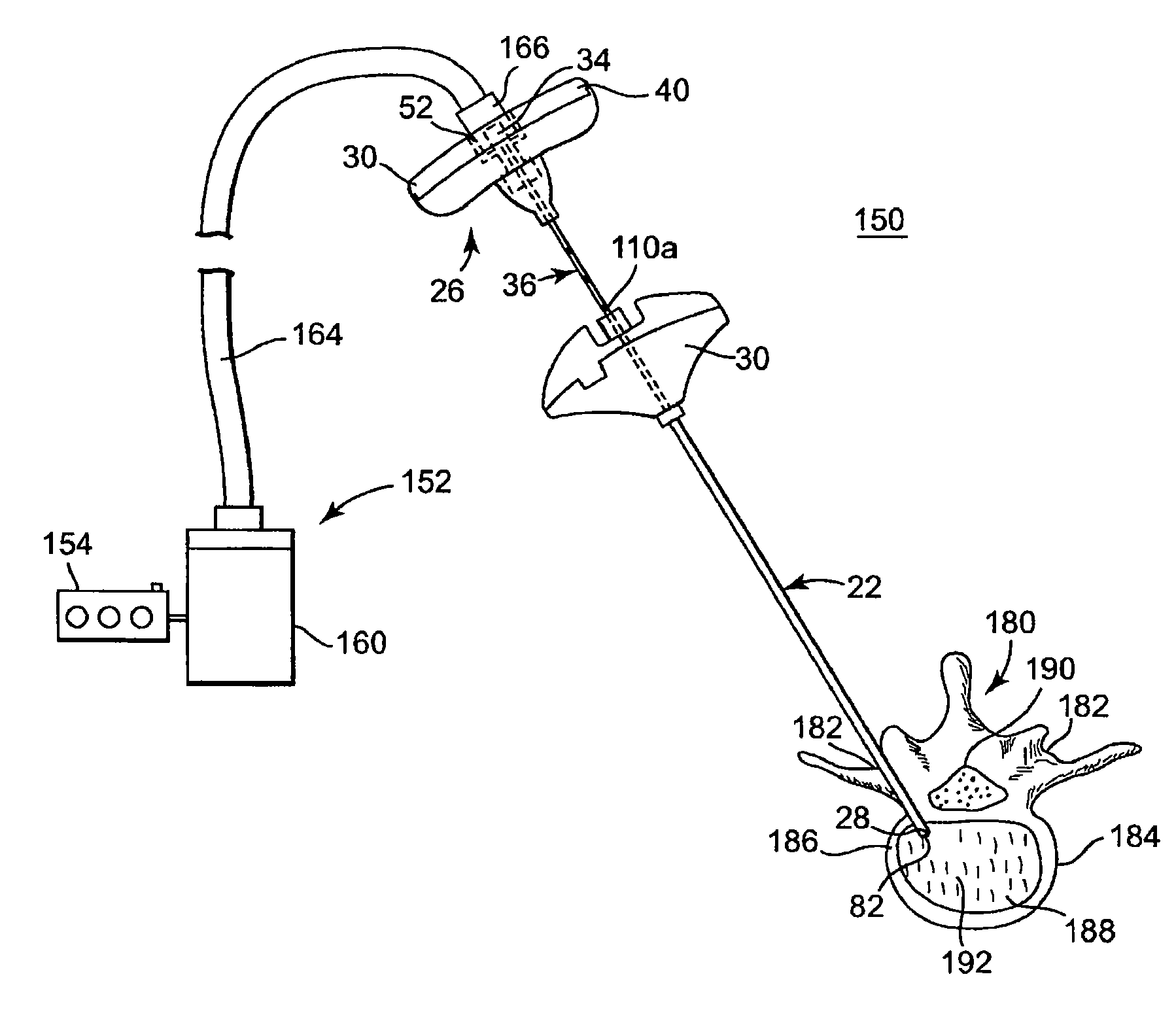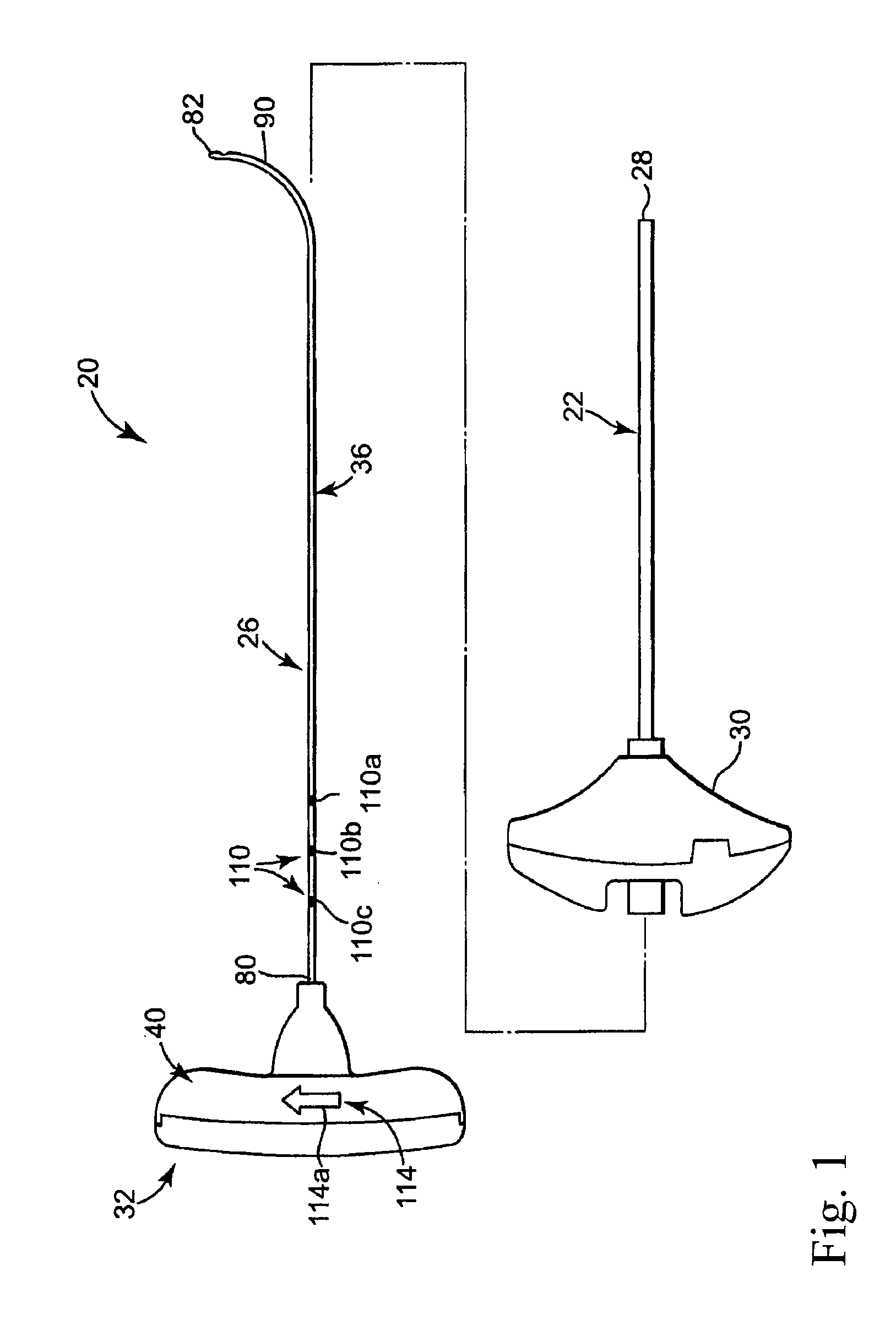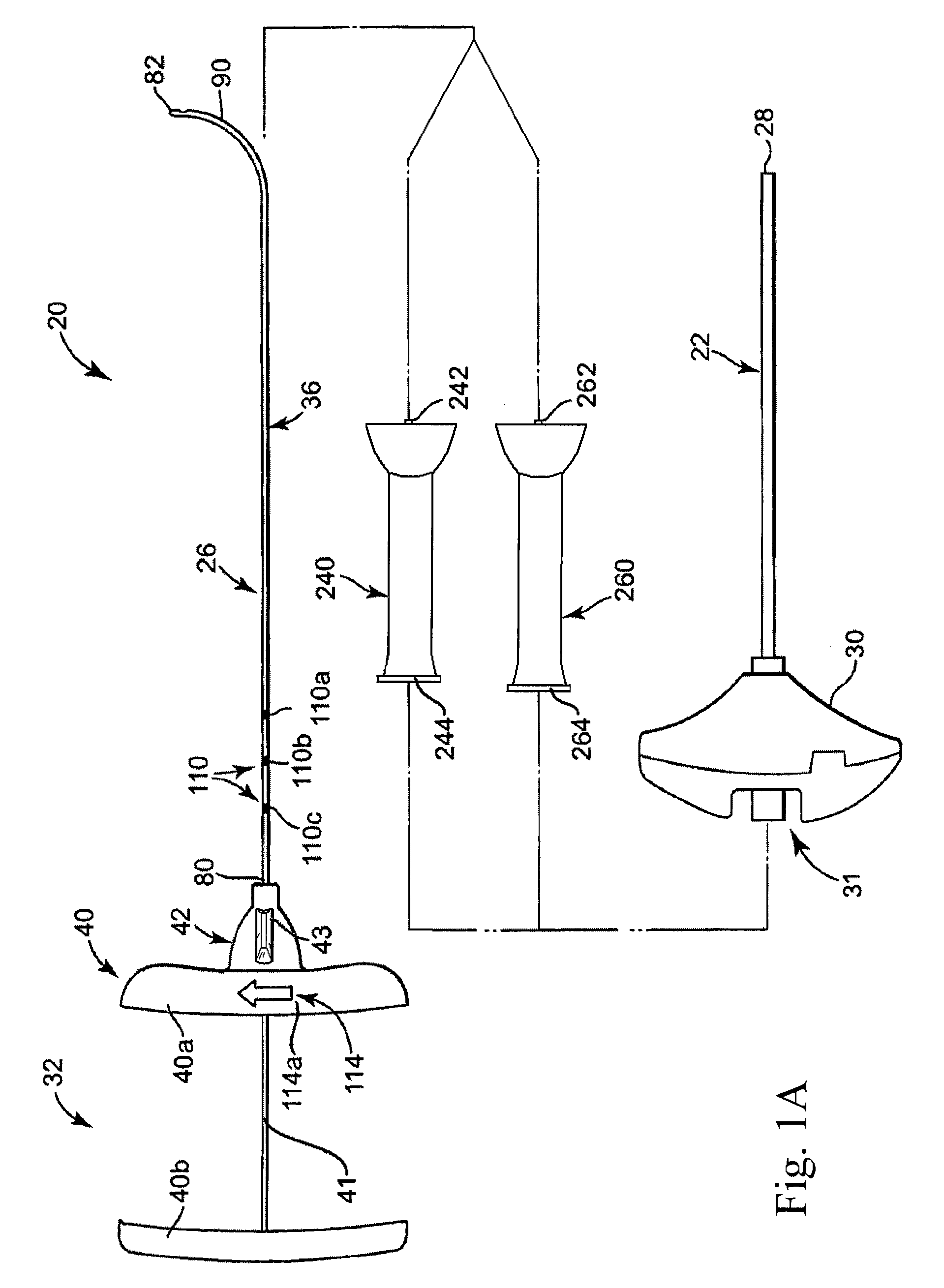[0011]Benefits achieved in accordance with principles of the disclosed invention include a delivery cannula providing a non-traumatic, blunt distal end that minimizes the risks of coring tissue or puncturing bone or tissue during intraosseous procedures without requiring additional components (such as separate wire). Other benefits relate to a delivery cannula defining at least one side orifice adjacent to a blunt distal end, where the orifice(s) permit a radial infusion of a curable material at a site within bone even in the case where the distal end is in contact with bone and / or tissue. Thus, a palliative bone procedure can be accomplished with reduced operating room time and with fewer approaches of surgical instruments to the bone site. For example, unipedicular vertebroplasty is readily accomplished. Further, virtually any area within the surgical site can be accessed. Also, the distal end of the delivery cannula can be placed as close as desired to a particular anatomical feature of the surgical site (e.g., a bone fracture) without fear that subsequently delivered material will forcibly progress into or through that feature.
[0012]Other benefits achieved in accordance with principles of the disclosed invention include a curved needle with sufficient strength to allow it to be used for creating a void in cancellous bone tissue to enhance introduction of a palliative material (e.g., curable bone cement material). Other benefits include one or more spacers that may be used to control the size and location of a void being created by controlling the depth and exposed curvature of a needle within, for example, a vertebral body.
[0013]Some aspects of the present invention relate to a delivery cannula device for delivering a curable material into bone. The device includes a delivery cannula and a hub forming a fluid port. The delivery cannula defines a proximal end, a deflectable segment, a distal end, a lumen, and at least one side orifice. The proximal end is axially open to the lumen. The deflectable segment is formed opposite the proximal end and terminates at the distal end that is otherwise axially closed. Further, the distal end has a blunt tip. The lumen extends from the proximal end and is fluidly connected to the side orifice(s). To this end, the side orifice(s) is formed adjacent to, and proximally space from, the distal end. Finally, the deflectable segment forms a curved shape in longitudinal extension and has a shape memory characteristic. With this configuration, the deflectable segment can be forced to a substantially straightened shape and will revert to the curved shape upon removal of the force. The hub is fluidly coupled to the proximal end of the delivery catheter. With this construction and during use, the distal end will not damage or core tissue when inserted into a delivery site within bone due to the blunt tip. Further, the side orifice(s) afford the ability to inject a curable material regardless of whether the distal end is lodged against bodily material, and can achieve more thorough dispensing.
[0015]Yet other aspects of the present invention relate to a method of stabilizing a bone structure of a human patient. The method includes providing a delivery cannula as previously described. A distal tip of a guide cannula is located within the bone structure. The delivery cannula is inserted within the guide cannula. In this regard, the deflectable segment deflects to a substantially straightened shape within the guide cannula. The delivery cannula is distally advanced relative to the guide cannula such that the distal end and at least a portion of the deflectable segment of the delivery cannula projects distal the distal tip of the guide cannula. To this end, the portion of the deflectable segment distal the distal tip of the guide cannula naturally reverts to the curved shape. The distal end of the delivery cannula is positioned adjacent a desired delivery site within the bone structure. A curable material is injected into the lumen. The injected curable material is delivered to the delivery site via the side orifice(s). Once delivered, the curable material is allowed to cure so as to stabilize the bone structure. In one embodiment, the method further includes rotating the delivery cannula relative to the guide cannula so as to alter a spatial position of the side orifice(s), thus affording the ability to inject the curable material in different planes.
[0017]Yet another aspect of the present invention relates to a method of injecting curable material to a delivery site within a bone structure. The method includes the step of providing a delivery cannula having an open, proximal end, a deflectable segment opposite the proximal end having a distal end and a lumen extending from the proximal end. The deflectable segment has a shape memory characteristic and naturally assumes a curved shape in longitudinal extension. In the method, the distal tip of a guide cannula is located within the bone structure. The delivery cannula is inserted within the guide cannula, characterized by the deflectable segment deflecting to a substantially straightened shape within the guide cannula. The delivery cannula is distally advanced such that the distal end and at least a portion of the deflectable segment projects distal the distal tip, characterized by the portion of the deflectable segment distal the distal tip naturally reverting to the curved shape. The distal end is positioned distally adjacent a first region within the delivery site. The curable material is then delivered to the first region within the delivery site. The distal end is then positioned adjacent a second region within the delivery site and curable material is delivered to the second region within the delivery site. Using one or more spacers may provide positional control and accuracy of delivery to a plurality of desired regions within a delivery site.
 Login to View More
Login to View More  Login to View More
Login to View More 


